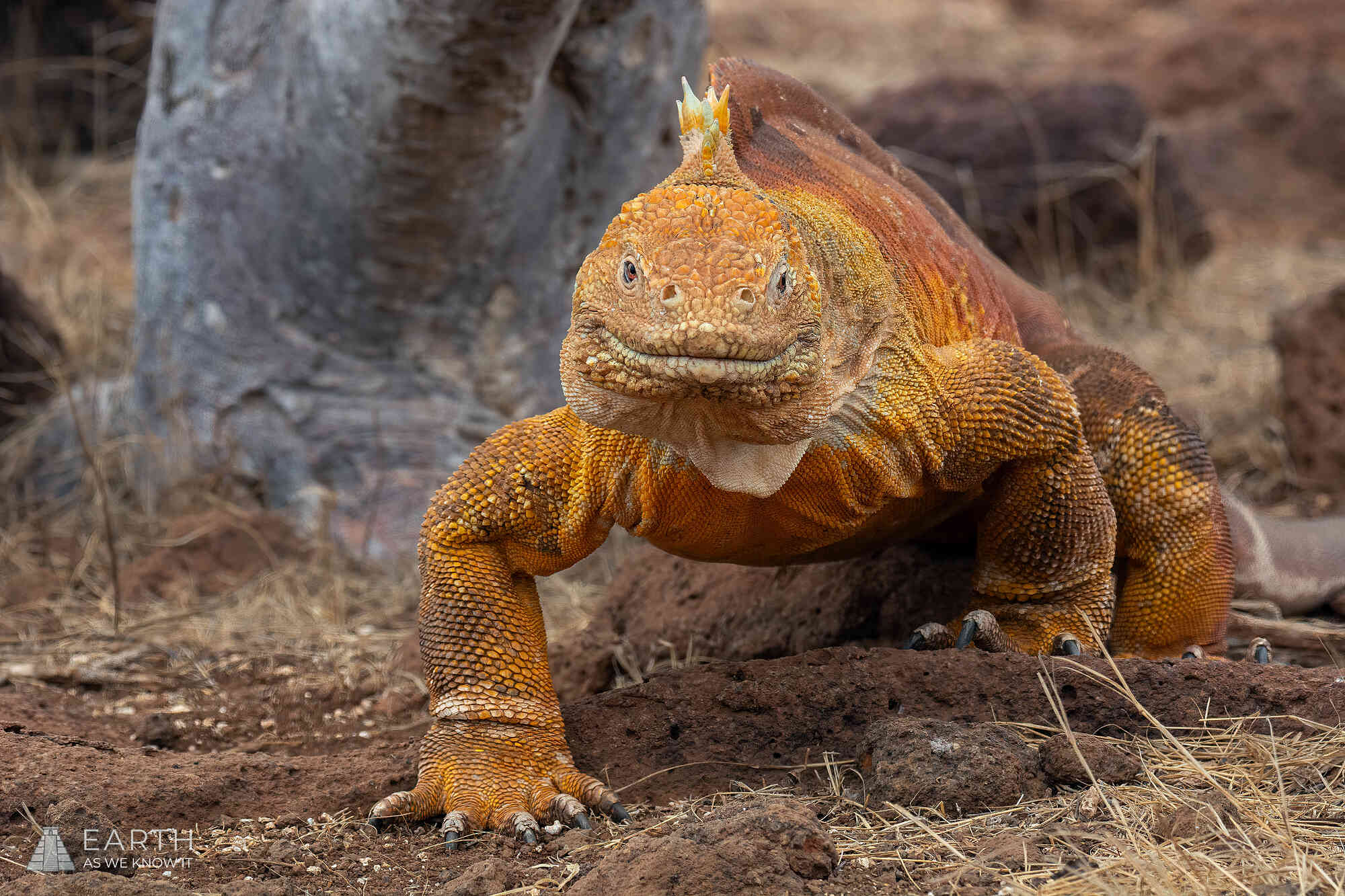Galapagos Yellow Land Iguana


Once arriving on the Galapagos, some of the new iguanas seem to have focused upon land vegetation, and others upon seaweed. And over time the population diverged, leading to distinct species of marine vs terrestrial iguanas, each pursuing their own survival strategy. The terrestrial iguana uniquely morphed on each island too, most notably with the males of certain regions developing distinct colorations. This sexual dimorphism between the male and female of a species is due to a specific kind of Natural Selection that Darwin named Sexual Selection. Here the bright colors of the male iguanas don’t give it some advantage in terms of its own survival. Quite the opposite, it became more conspicuous. This might explain why the iguanas of Santa Fe Island lack this distinct coloring, since the predatory Galapagos Hawk frequents there. Rather, bright colors and bizarre ornamentation have typically evolved to attract the attention of the opposite sex. These can act as a display of health, or the aesthetic trait can be genetically tied to the occurrence of some other more advantageous trait. Sexual Selection can also take the form of males battling for dominance. This is also evident with the iguanas, where the males are consequently significantly larger than the females. Battles are costly though, and are typically avoided via posturing, exhibited via their vigorous head nods when challenged.














